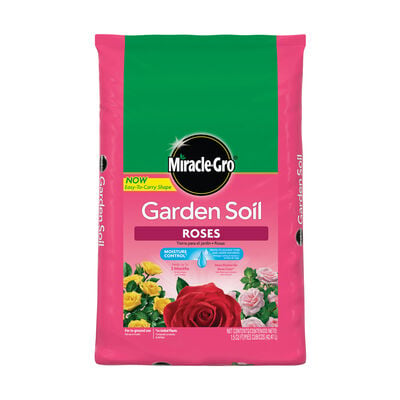
How to Prune Roses
Don't be afraid to prune roses!
Miraculous Gardening: How to Prune Roses
The basic principles of rose pruning are the same, regardless of the rose type, but the timing of pruning, amount to remove, and objectives are slightly different, depending on the type. Here's how to prune roses.
Materials
• Hand pruners (bypass pruners are best)
• Pruning saw
• Loppers
• Gloves
• Watering can
• Miracle-Gro® Water Soluble Rose Plant Food
Why It's Important to Prune Roses
There are four basic reasons to prune roses:
• Remove dead and diseased branches (also called "canes").
• Rejuvenate the plant and encourage blooming.
• Encourage airflow through the shrub.
• Control size and shape.
Each type of pruning is equally important to the health of the shrub, though timing can vary depending on which type you're pruning.
Basics of Pruning Roses
Whether you're pruning roses to reduce the size, deadheading spent blooms, pruning to shape the shrub, or pruning for airflow, you'll always cut the same way.
• Using sharp hand pruners, loppers, or a pruning saw (for large branches), cut the branch at back to an outward-facing bud.
• Make the cut at a 45-degree angle about 1/4 inch above the bud, slanting away from the bud. An angled cut allows water to run off, rather than collecting in the cut end of the stem, which can encourage the spread of disease.
• Unless you're cutting a branch down to the ground, cut back to a leaf with five leaflets.
• The entire experience will be more comfortable if you wear long sleeves and leather or rubber-coated gloves while pruning. You can also wear rose gloves, which extend to the elbow.
When to Prune Roses
A good rule of thumb is to wait until the forsythias are blooming (in very early spring) to prune roses to reduce size, encourage spring growth, and rejuvenate the shrub.
Prune to remove dead or diseased growth at any time, though it is best to avoid major pruning from late summer through early winter, as the shrubs will be starting to go dormant. Deadhead as the flowers fade to keep shrubs blooming longer.
Climbing roses are a special group, and are often pruned wrong. While "repeat blooming" roses should be pruned in very early spring, old-fashioned and heirloom climbing roses usually bloom on old growth, and should be pruned after they bloom. For all climbing roses, remove crossing or rubbing branches and clean up the long branches. Cut side shoots back to 2-3 inches.

Pruning to Reduce Size
Hybrid tea roses and shrub roses respond especially well to this type of pruning.
• Cut each branch back to an outward-facing bud.
• Roses can be cut back hard, but don’t remove more than 1/3 to 1/2 of the overall growth.
• Hybrid tea roses should have an open vase shape after they’ve been pruned. Shrub roses will be uniform but reduced in size.

Pruning to Remove Dead and Diseased Growth
Pruning damaged or diseased growth is important so insects don’t take up residence in dead branches and multiply.
• You can spot dead branches easily because they will be a different color from the live branches.
• Remove old, diseased, or dead wood by cutting the affected branches down to the bottom of the plant.

Pruning to Promote Airflow
Prune to promote airflow at the same time you prune to reduce size.
• Remove branches that are crossing or rubbing up against each other, as well as those growing toward the center of the shrub.
• Always cut back to an outward-facing bud.
• You can remove up to one-half of the growth from within the center of the shrub to promote air movement.

Pruning to Rejuvenate Growth
Some shrubs benefit from “renewal pruning.“ This is the practice of removing one-third of the plant’s growth each year, starting with the oldest growth in the first year.
• Cut back the oldest branches to the ground, leaving two-thirds of the branches in place.
• New growth will emerge and bloom profusely.
• During the following spring, remove another one-third of the oldest growth, evenly, from throughout the shrub.
Caring for Roses After Pruning
Never cover cuts on roses with any type of tar or sap. That creates a humid environment hospitable to pests and diseases.
• Once the roses start growing, it’s time to feed. Use Miracle-Gro® Water Soluble Rose Plant Food to feed plants every 7 to 14 days during the growing season. Be sure to follow label directions.
• Stop feeding in late summer, as the plants will begin to go dormant for the winter and new growth could be cold-sensitive.
How to Prune Roses: Recap
• Decide why you’re pruning: to rejuvenate the rose bush, remove dead and diseased branches, promote airflow, or control size and shape.
• Use basic rose pruning principles for healthy cuts.
• Prune at the proper time for the type of rose you’re growing.
• Use the proper pruning technique for your desired effect.
• Give roses good care after pruning to promote new growth and blooms.


